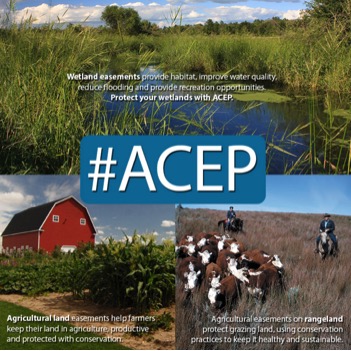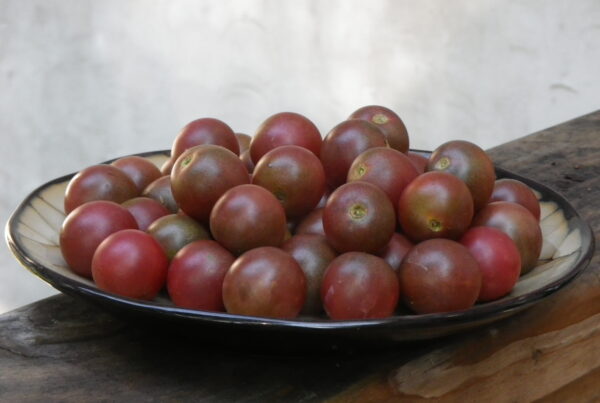Policy Bytes from the National Sustainable Agriculture Coalition Web Site
By Mark Schonbeck
 CONSERVATION
CONSERVATION
Working Lands Conservation Programs
NRCS has released guidance to its State offices for the EQIP Organic Initiative, High Tunnel Initiative, On Farm Energy, and other special Initiatives. For more information and links to the EQIP Initiatives, visit http://sustainableagriculture.net/blog/fy16-eqip-initiative-guidance/ (Nov. 11).
Meanwhile, NRCS is still in the middle of a major overhaul of the Conservation Stewardship Program (CSP), seeking to make it simpler, more transparent, and easier to administer. NSAC and member organizations, in dialogue with state NRCS offices, are promoting additional measures to reward ongoing as well as new conservation activities, to set a reasonable minimum contract payment for small diversified farms, to enforce the statutory maximum payment (so CSP reaches more farms), and to improve support for conservation planning and crop rotations. Hopefully, NRCS will keep to its timeline of releasing the revamped 2016 CSP by January, so farmers have time to apply before the busy growing season arrives. For more, visit http://sustainableagriculture.net/blog/csp-overhaul-update/ (Nov 17)
On November 19, NRCS announced the release of its new National Organic Farming Handbook (47 pp), designed to help NRCS field staff work more effectively with organic producers seeking to participate in CSP and EQIP. VABF played a role in this outcome as one of 10 partners with National Center for Appropriate Technology in a NRCS Conservation Innovation Grant (CIG) project, Integrating Sustainable and Organic Agriculture into NRCS Programs. During 2014, 10 of us on the CIG project team worked with 16 NRCS personnel and three other non-governmental organizational representatives to develop this Handbook.  It is gratifying indeed to see it in print and available to NRCS field offices within a year after our team submitted its final draft to NRCS National Headquarters. Read the NSAC press release and blog post on the Organic Handbook at:
http://sustainableagriculture.net/blog/release-organic-transition-handbook/ (Nov 19)
http://sustainableagriculture.net/blog/nrcs-organic-guidebook/ (Nov 19)
NSAC continues its efforts to protect conservation program funding.  This year’s annual appropriations budget again threatens to raid one or both of these programs with potential cuts of 18% (EQIP) and 23% (CSP) from funding levels mandated by the 2014 Farm Bill. Fortunately, the recent two-year budget deal would trim crop insurance subsidies but not conservation –though it would not reverse the appropriations cuts. However, Senate and House Agriculture Committees could attempt to reverse the insurance program cuts, possibly shifting the burden to either conservation or food assistance. (For more on this, visit http://sustainableagriculture.net/blog/final-budget-deal/ (Oct 30). Although neither of Virginia’s Senators sits on either the Agriculture Committee or the Agriculture Appropriations Subcommittee, they could help protect conservation funding by writing a Dear Colleague letter emphasizing the importance of CSP and EQIP for protecting the Chesapeake Bay. If such a letter were signed by Senators from all Chesapeake Bay Watershed states (VA, WV, MD, DE, PA, NJ, and NY), it could have a significant impact.
What you can do: Contact Senator Warner (202-224-2023) and Kaine (202-224-4024) on this issue – both are pretty strong champions for a clean Bay.
 Conservation Easement Programs
Conservation Easement Programs
Recently, the NRCS announced funding available for the Agricultural Conservation Easement Program (ACEP), which combines the Grassland Reserve, Wetland Reserve, and Farmland and Ranchland Protection Programs. The first two protect native grasslands and wetlands from either tillage agriculture or residential/industrial development, while the farmland / ranchland part of the program is intended to keep land in agriculture and protect it from development. If you would like to participate in any of these programs, or find out more, visit this link.
NSAC blog post on this program – http://sustainableagriculture.net/blog/2016-acep-funding-announced/
FOOD SAFETY, FARM-TO-SCHOOL, RESEARCH, AND VALUE-ADDED
FDA Issues Final Produce Safety Rule
After two rounds of public comment during which the NSAC Food Systems Integrity Committee engaged in intensive dialogue with th US Food and Drug Administration (FDA), the agency announced its final Produce Safety Rule on November 2. FDA has deferred requirement of long intervals between manure and compost applications and food crop production pending additional research on food safety impacts of these amendments.  NSAC is analyzing the Produce Rule and the earlier-issued Preventive Controls Rule (for “food facilitiesâ€), and will work with FDA to encourage education, training, and other farmer-friendly approaches (such as group GAP certification, a USDA initiative) to produce safety, and to help farmers navigate the new regulatory landscape. For more information, see NSAC blog entries at:
http://sustainableagriculture.net/blog/release-nsac-comments-on-produce-rule/ (Nov 13)
http://sustainableagriculture.net/blog/produce-rule-preview/ (Nov. 5),
http://sustainableagriculture.net/blog/groupgap-launch-preview/ (Nov 27) http://sustainableagriculture.net/blog/pc-rule-analysis-part-1/ (Sept. 21).
Child Nutrition Reauthorization and Farm to School
NSAC continues advocating for the Farm to School Act of 2015, which, if adopted as part of the Child Nutrition Reauthorization, would triple funding for USDA farm-to-school grants. Our campaign received a boost when the USDA Farm to School census reported the growth and many benefits of these programs. For some inspiring reading, visit http://sustainableagriculture.net/blog/farm-to-school-census-2015/ (Oct. 20), and http://sustainableagriculture.net/blog/building-on-farm-to-school-success-act-today/ (Oct. 22)
Organic Agriculture Research
NSAC again submitted comments on the Request for Applications for the USDA Organic Research and Extension Initiative (OREI), and Organic Farming Research Foundation continues work on the OREI-funded analysis of outcomes and benefits of 13 years of USDA-funded organic research. OREI awards in 2015 include plant breeding projects for vegetables and cover crops, a planning grant for breeding tomato disease resistance, a student organic seed symposium, projects on organic rice IPM and on designing cover crop mixtures for farm specific needs, and much more. See Seeds and Breeds article for more on OREI-funded, farmer participatory plant breeding.
Value Added Producer Grants
The USDA recently announced Value Added Producer Grant awards to 258 farm businesses, totaling $34 million for 2015.  Virginia led the nation with 21 awards totaling slightly over $3 million. Of the nationwide total, 11 awards went to organic food projects, 32 to locally marketed value-added products, and 12 to grass fed livestock products. For more information, visit http://sustainableagriculture.net/blog/fy15-vapg-awards/.





